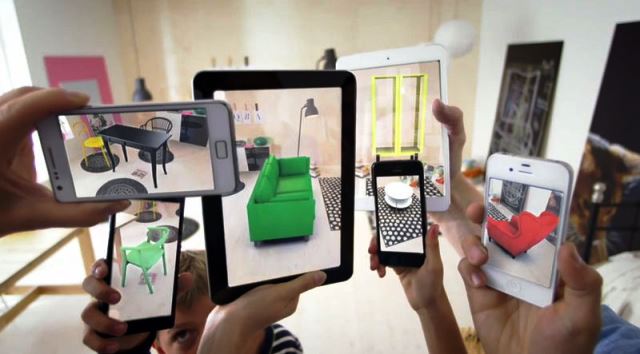
Image source: Wikimedia Commons
PR and marketing applications of augmented reality (AR) are likely to proliferate in coming months, enabling brands to create better customer understanding and appreciation of marketing and PR messages in an enjoyable interactive experience.
By superimposing computer-generated images onto smartphone cameras or other screens, AR blends the physical and digital worlds and allows users to shape their experiences. Pokémon Go offers the best-known example, but brands can apply more practical PR and marketing uses such as showing what furniture looks like the customer’s home or what clothing or make-up looks like on customers.
While it wasn’t then called AR, my clients and I experimented with interactive video in the late 1980s to mix live camera outputs with prerecorded video and graphics to demonstrate new surgical techniques and to show floor coverings in actual surroundings. Technical shortcomings, now overcome by digital technologies, stymied our efforts. Now, only creative shortcomings can hamper the growth of AR as a marketing tool.
Even though most marketers realize that AR offers new ways to promote products and interact with consumers, relatively few have moved beyond the experimental stage, and even fewer now integrate AR into their overall marketing strategy, according to experts at The Boston Consulting Group.
The AR opportunity is already large and closer to reality than many marketers realize. BCG estimates that more than 80 million people in the US, or roughly one-third of all smartphone users, engage with AR at least monthly. AR use will soon explode as major players like Facebook, Google, Apple and Amazon invest heavily in the technology.
Increasing Brand Awareness with AR
AR marketing has so for focused mainly on the top of the marketing funnel: reach, engagement and brand awareness. Nissan achieved a 15-percentage-point improvement in brand favorability with its See the Unseen campaign that displayed advanced vehicle safety technologies through interaction with Star Wars movie characters. Many marketing leaders believe AR will help bottom-of-the-funnel objectives like increased sales within the next two years.
BCG recommends that brands:
Consider making AR a core component of their overall marketing strategy. “For marketers, the user numbers are too large, the engagement and results too promising, and the potential brand halo too compelling to ignore,” the report writers state.
Measure results. While marketing managers cite measuring results and uncertainty about return on investment as top barriers to adoption, evidence already shows that AR marketing can be effective at driving business outcomes. Set metrics that align with business objectives of a specific marketing campaign. Measure results and adjust campaigns for optimal impact against set objectives.
Consider methods of distribution. Brands can develop and manage their own proprietary mobile apps or brick-and-mortar store experiences in what’s called first-party AR, use platforms developed by social media networks, digital-publishing companies or others (third-party AR), or seek a hybrid approach. The choice has substantial implications. Consider your brand’s overall marketing objectives when choosing a distribution platform.
Embrace a test-and-learn culture. CMOs should instill a mindset of test and learn throughout their organizations by setting up the right processes, rewarding new ideas — and not punishing failed ones.
Take a Deliberate Approach
Despite the increasing attention, some would say hype, about AR, some marketing experts recommend taking a cautious approach.
Don’t add AR to your marketing or PR strategy because it seems fashionable or because everyone else is doing it, urges Drew Hendricks, CEO of Flint. “This type of technology may not yet be ready or relevant to every industry,” he says.
The real payoff from AR comes when it does something that no other communications technique can do. AR succeeds best when it adds a new dimension to the marketing message – when it creates consumer understanding as no other technique can or when the unique experience of AR motivates the consumer to take the next step in the buying process.
Before launching any use, test the AR app again and again until you know it offers a truly unique, engaging experience for your audience. Proceed carefully and stay attuned to ongoing developments so you can add innovations to your campaigns.
Bottom Line: It’s time to move beyond the experimental stage and incorporate augmented reality into core marketing strategies, many experts believe. They expect that AR will soon surge and offer brands a new way to communicate with customers and promote products.
William J. Comcowich founded and served as CEO of CyberAlert LLC, the predecessor of Glean.info. He is currently serving as Interim CEO and member of the Board of Directors. Glean.info provides customized media monitoring, media measurement and analytics solutions across all types of traditional and social media.




